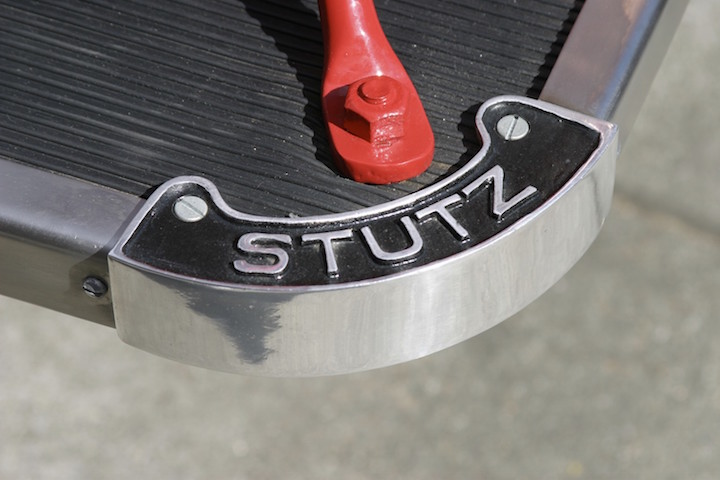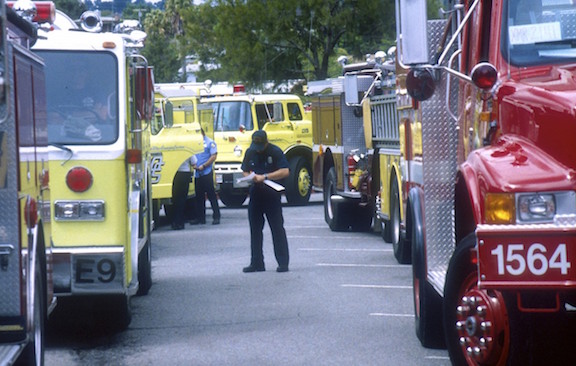|
"History is malleable. A new cache of diaries can shed new light, and archeological evidence can challenge our popular assumptions." - Ken Burns
Marin County fire departments today have relatively few restored historical apparatus. This week we have uploaded our first videos, featuring two beautifully restored fire pumpers. Kentfield's 1927 La France and Bob Marcucci's 1922 Stutz from San Rafael are featured in videos directed and written by Bill Lellis and videotaped by Dan White - thanks to both! Visit our historical fire apparatus pages, and watch these historical videos! Watch for more videos coming over the summer. There is an old saying that "Whiskey is for drinking, water is for fighting". While this quote has been attributed to Mark Twain, historians so far have been unable to find any hard evidence linking the observation to him.
Regardless, this saying came to mind when learning about the large fire at the American Distilling Company in north Sausalito on May 4, 1963. Caused by faulty wiring, the fire destroyed over 1,500 barrels of bourbon, scotch, gin, vodka, and tequila. While we have started our history page on this fire, we are seeking more information from firemen who responded to the blaze, both from Sausalito and other FD's on mutual aid. We'll also eventually cover another large fire at the same location in 1916, when the business was called Mason Distillery, founded in 1880. Sadly, most old fire engines eventually disappear after decades of dedicated front line service. Some become 'hand-me-down' donations, or are sold to fire departments that can't afford new ones. Some are sold outside of the fire service, such as to ranchers, farmers, or contractors who want a used vehicle with a water pump and tank. Sometimes you can see old fire engines sitting out in ranch fields after their useful life has passed. The lucky ones are sometimes sold to collectors, who often restore them. Or they end up in museums, or are preserved by their original fire department as historical memorabilia.
We are starting a new section this week titled Historical Fire Apparatus. It will feature Marin County fire apparatus that has been preserved and/or restored to their former glory. This week we have posted the story of an original San Rafael FD pumper, a 1922 Stutz, restored to 'mint condition' by retired San Rafael Fire Chief Robert Marcucci and his brother Marty. This engine served San Rafael with pride from 1922 into the 1950's, and was eventually sold to a collector in the south Bay Area. The engine was a proud 'workhorse', responding to calls such as the 1950 Mar Vista Motors fire, where two SRFD firemen were killed 65 years ago this week. Read how it was rescued from sitting out in the weather, in a state of general decay. Check it out under More>Historical Fire Apparatus>1922 Stutz. Sanborn maps were created around America in over 12,000 communities from 1867-2007. The name comes from the company that created them - The Sanborn Company of New York. They were primarily made as a tool to assess for potential fire insurance risks and related information for insurance companies. Should they insure properties, and, if so, at what cost and risk? The map would help them make a decision.
What's really great about these old maps is they always had a brief description of the water supply available for fire protection, and of any fire department or resources. We know they were done for at least 11 communities in Marin County, and we hope to eventually post most of them. For now, check out the full sample map from Larkspur in 1909 on the Sanborn Fire Maps page. A closeup of the top of the page is shown below, describing the water supply, population, and fire department. Today we almost take Mutual and Automatic Aid agreements and responses for granted. Boundary drops are common, usually allowing and dispatching the closest unit to respond to the emergency. Throughout fire service history, that has not always been the case, including in Marin County.
Historically, it was very common for local FDs to either handle their own fires completely on their own, or for their governing body to forbid responding over city or district boundary lines. The basic reason usually was that the FD was funded by the local community, and those outside of the city, town, or district were not paying for it. In fact, this type of conflict still happens every now and then somewhere in America. Why, how, when, where and who changed this situation over time in Marin to what it is today? The story is both interesting and complex. Look forward to a future feature on this topic. |
AuthorOur Blog announces new site content, and gives the context of the topic and it's relationship to fire service history. Written by Bill Lellis & Paul Smith Archives
August 2022
Categories |






 RSS Feed
RSS Feed